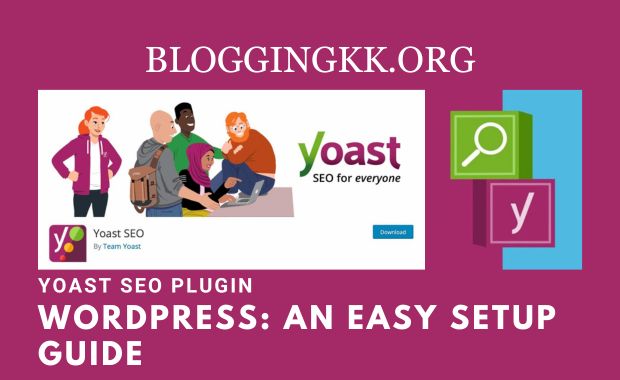In 2025, optimizing your WordPress website for search engines remains a top priority for growing your online presence. One of the most trusted tools for this purpose is the Yoast SEO plugin. With its user-friendly interface and powerful optimization features, Yoast SEO empowers website owners to enhance their search rankings without being SEO experts.
This guide provides a step-by-step walkthrough for setting up Yoast SEO in WordPress, ensuring your content is both search engine and user-friendly.

1. Introduction to Yoast SEO
Yoast SEO is one of the most popular WordPress plugins for improving on-page SEO. It helps website owners optimize their content for search engines by offering tools like:
- Content analysis to ensure readability and keyword optimization.
- XML sitemap creation for better indexing.
- Meta tag management for effective search engine display.
Whether you’re a beginner or an experienced SEO professional, Yoast provides a comprehensive solution to make your website more search-friendly.
2. Installing Yoast SEO Plugin
Follow these steps to install Yoast SEO:
- Log in to your WordPress dashboard.
- Navigate to Plugins > Add New.
- In the search bar, type “Yoast SEO.”
- Locate the Yoast SEO plugin and click Install Now.
- Once installed, click Activate.
Now, Yoast SEO is ready for configuration.
3. Initial Configuration Wizard
The first step after activation is running the configuration wizard. This tool guides you through essential setup tasks.
General Settings
- Go to SEO > General.
- Click the Configuration Wizard tab.
- Select your website type (e.g., blog, online store, portfolio).
- Indicate whether your site is live and ready for indexing by search engines.
Site Representation
In the site representation section:
- Choose whether your site represents a person or an organization.
- If you choose an organization, add the business name and upload a logo.
4. Setting Up SEO Basics
Titles and Meta Descriptions
Proper titles and meta descriptions improve your site’s visibility. Here’s how to configure them:
- Go to SEO > Search Appearance.
- Under the General tab, set a title separator (e.g., | or –) to ensure consistency.
- Configure templates for:
- Homepage titles and descriptions.
- Posts and pages.
Example:
- Title: “{{Page Title}} | {{Site Name}}”
- Meta Description: “Discover [topic or service] at {{Site Name}}. Learn more today!”
XML Sitemaps
XML sitemaps help search engines index your site. To enable them:
- Navigate to SEO > General > Features.
- Ensure the XML Sitemap toggle is set to “On.”
- Click See the XML Sitemap to verify the setup.
Social Media Integration
To link your social media profiles:
- Go to SEO > Social.
- Add URLs for platforms like Facebook, Twitter, and LinkedIn.
- Enable Open Graph metadata for better social sharing.
5. Using the Content Optimization Tools
Yoast SEO excels in helping you optimize individual posts and pages.
Focus Keyphrase
- In the WordPress editor, locate the Yoast SEO section below your content.
- Enter your Focus Keyphrase (primary keyword).
- Review the suggestions and aim for green indicators in the analysis.
Keyphrase Optimization Tips:
- Use the keyphrase in the title, introduction, headings, and URL.
- Avoid overstuffing; aim for natural placement.
Readability Analysis
Yoast’s readability tool ensures your content is engaging and easy to understand. It analyzes:
- Sentence length.
- Paragraph structure.
- Passive voice usage.
- Transition words.
Aim for green indicators for maximum readability.
6. Advanced Settings for Maximum Impact
Breadcrumbs
Breadcrumbs enhance user navigation and improve search engine visibility. To enable them:
- Navigate to SEO > Search Appearance > Breadcrumbs.
- Toggle the setting to “On.”
- Customize breadcrumb separators and taxonomy.
Robots.txt and .htaccess Editor
- Go to SEO > Tools.
- Access the File Editor to manage robots.txt and .htaccess files.
Note: Modify these files cautiously to avoid accidental site issues.
7. FAQs on Yoast SEO
Q1: Is Yoast SEO free?
Yes, Yoast SEO offers a robust free version. However, the premium version includes advanced features like redirect management and multiple focus keyphrases.
Q2: How often should I update Yoast SEO?
Keep Yoast SEO updated to benefit from the latest features and SEO trends.
Q3: Does Yoast guarantee higher rankings?
While Yoast improves on-page SEO, rankings depend on multiple factors, including quality content and backlinks.
8. Conclusion
The Yoast SEO plugin is an indispensable tool for WordPress users aiming to improve their website’s visibility in 2025. By following this guide, you’ll be well on your way to creating content that not only ranks high in search engines but also engages and delights your audience.
Invest time in optimizing your content with Yoast’s tools, and remember to regularly review your settings for ongoing success. Happy optimizing!